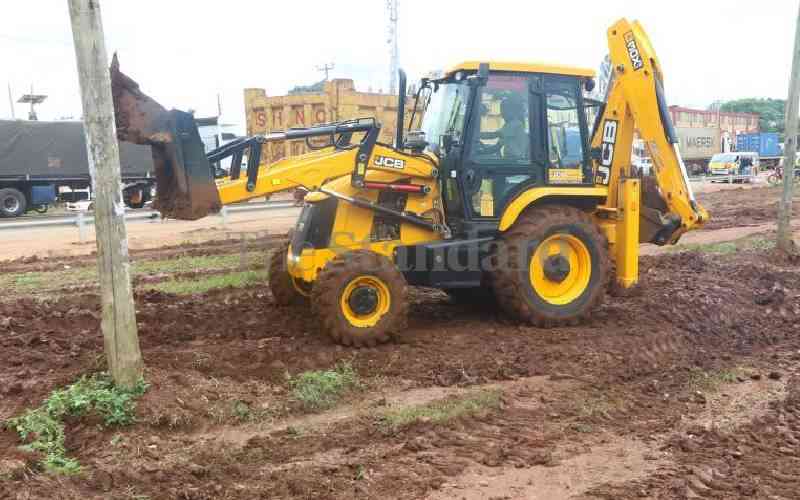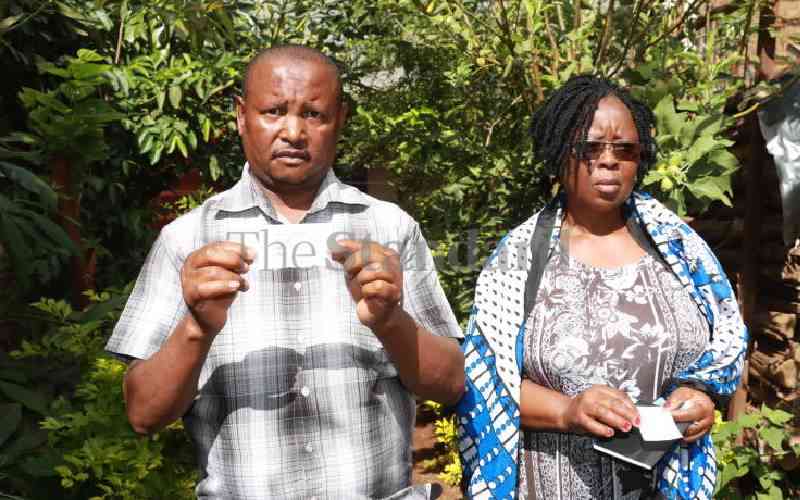Enhance agriculture lies at the heart of poverty reduction and increased food security in most developing nations.
More than 80 per cent of Kenyans live in rural areas and earn their livelihoods from agricultural-based activities.
To address food security challenges, Conservation Agriculture (CA) holds promise as an approach to managing agro-ecosystems for improved and sustained productivity, increased profits and food security while preserving and enhancing the resource base and the environment’.
CA combines three cropping practices to help reduce erosion and water run-off, increase soil fertility and ultimately the crop yields. These consist of minimum or no-tillage to reduce soil disturbance; permanent soil cover, using crop residues as mulch; and crop rotations or intercropping, especially with nitrogen-fixing legumes.
In conventional farming, farmers plough and hoe to improve the soil structure and control weeds.
But in the long-term, they actually destroy the soil structure and contribute to diminishing soil fertility. In CA, tillage is reduced to ripping planting lines or making holes for planting with a hoe. The ideal is to plant direct into the soil, without ploughing.
Keep the soil covered as much as possible. When soil is left bare, it is simply washed away by rain, or is blown away by the wind. In CA, crop residues left on the field, mulch and special cover crops protect the soil from erosion and limit weed growth throughout the year.
Mix and rotate crops
In conventional farming, the same crop is sometimes planted each season. That allows certain pests, diseases and weeds to survive and multiply, resulting in lower yields.
In CA, this is minimised by planting the right mix of crops in the same field, and rotating crops from season to season. This also helps maintain soil fertility. The three principles of conservation agriculture are like a three-legged cooking pot: it works best if it has all three legs!
But, to what extent are small-scale farmers in Kenya benefiting from CA?
Ministry of Agriculture Busia County in collaboration with PAFID are promoting CA in the county.
Farmers practise conservation agriculture by digging small planting holes in lines, at carefully measured distances, leaving the rest of the soil unturned.
Compost or manure is then put in the holes to improve soil fertility and water-holding capacity, then sow maize or beans.
Cover crops are planted between the planting holes to minimise soil erosion and to suppress weeds. Should weeds emerge, they are pulled out by hand or slashed.
Stay informed. Subscribe to our newsletter
In the subsequent season, they can plant different crops in the same holes. It is not necessary to dig through the hard pan again, because the first season’s crop roots will have penetrated deep into soil and will help water percolate into the soil.
A subsoiler is used to break up the hard pan during the first year or a ripper in case there is no hard pan to open up a narrow furrow for planting seed.
Farmers leave the residues and cover crop on the field after harvest. That conserves soil moisture and controls weeds. Farmers with tractors can use conservation agriculture too.
They can replace their mould board ploughs, disks and harrows with rippers, subsoiler and direct-drill planters.
Initial land preparation requires substantial investment, use of crop residues as mulch/soil cover competes directly with other very important uses such as animal fodder. Poor families also often use maize, sorghum or millet stalks as cooking fuel.
Switching to CA involves a fundamental change of mindset
Farmers must drop their traditional land preparation practices (plough or hoe), plough, and instead rely on “biological tillage” by the plant roots and earthworms.
Extension staff should put farmer’s needs at the centre rather than seeing them as mere recipients of advice for effective adoption of CA.
The writer is a consultant/advisor on sustainable agricultural innovations. He has a degree and Masters in Crop Biotechnology.
 The Standard Group Plc is a
multi-media organization with investments in media platforms spanning newspaper
print operations, television, radio broadcasting, digital and online services. The
Standard Group is recognized as a leading multi-media house in Kenya with a key
influence in matters of national and international interest.
The Standard Group Plc is a
multi-media organization with investments in media platforms spanning newspaper
print operations, television, radio broadcasting, digital and online services. The
Standard Group is recognized as a leading multi-media house in Kenya with a key
influence in matters of national and international interest.
 The Standard Group Plc is a
multi-media organization with investments in media platforms spanning newspaper
print operations, television, radio broadcasting, digital and online services. The
Standard Group is recognized as a leading multi-media house in Kenya with a key
influence in matters of national and international interest.
The Standard Group Plc is a
multi-media organization with investments in media platforms spanning newspaper
print operations, television, radio broadcasting, digital and online services. The
Standard Group is recognized as a leading multi-media house in Kenya with a key
influence in matters of national and international interest.









